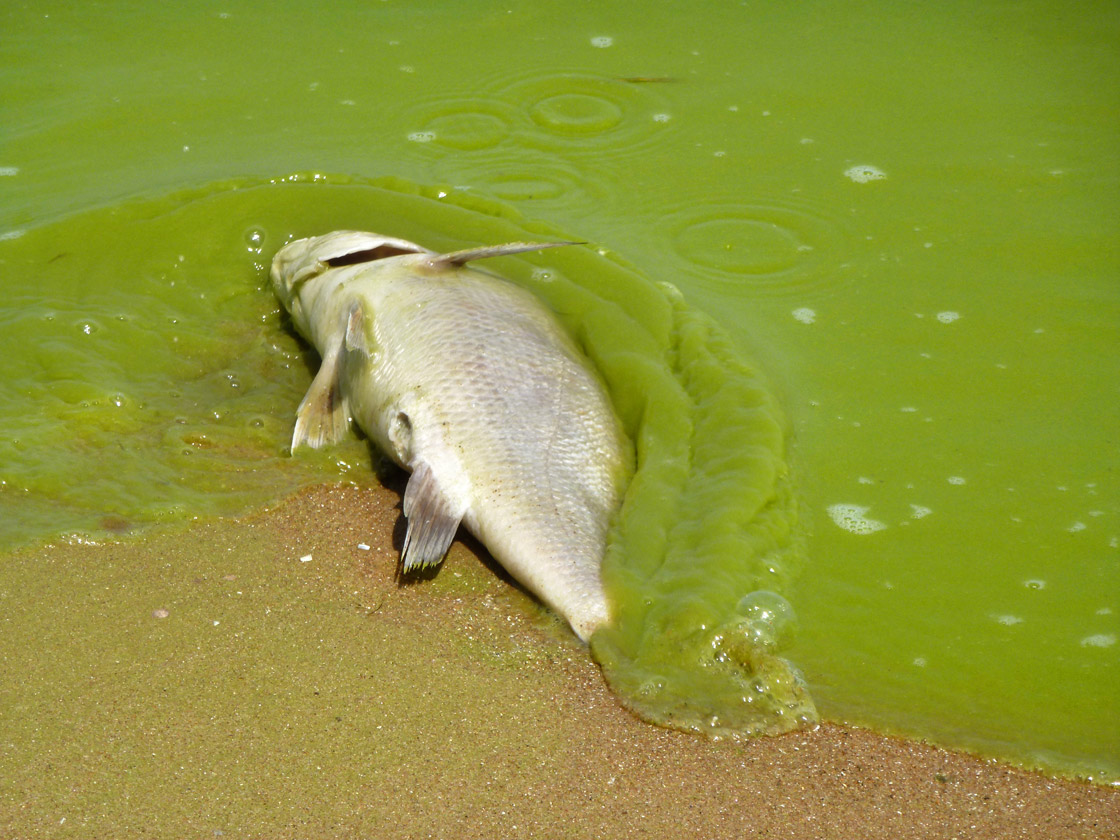It’s slimy, green and threatened the water supply for hundreds of thousands. Next year, it could be millions.

But this aquatic supervillian should be familiar to Lake Erie residents on both sides of the border by now: The toxic algae – which contains Microcystis, a cyanobacteria toxic to humans and wildlife – has been a menace of various degrees for years.
And even though Canadians weren’t directly affected by the tap water ban in Toledo, Ohio – lifted on Monday – they shouldn’t feel so relieved.
Canadian shorelines are just as vulnerable to the algae bloom, says Raj Bejankiwar, a physical scientist with the International Joint Commission, an agency made up of both Canadian and U.S. officials. He said Canada may yet be affected by algal blooms starting this month and next.
Just ask Pelee Islanders, who were forbidden from drinking, bathing or cooking with tap water contaminated by a toxic algae bloom in 2009.
What’s going on?
Lake Erie is the shallowest of all the Great Lakes, exposing it to algae blooms as it warms faster than deeper lakes. It’s also the second-most populous of the Great Lakes, according to the Great Lakes Environmental Research Laboratory, with 11.6 million people ringing its shores.
In warmer months the algae blooms create a thick surface layer in the lakes, choking the deeper water, creating a condition called hypoxia. As the algae decays it depletes the oxygen in the deeper water, creating a “dead zone”, making it impossible for most fish and wildlife to survive. Climate change can extend the time that hypoxic conditions occur as warmer weather starts earlier and ends later in the season than normal, according to the Lake Erie Ecosystem Priority (LEEP), which the International Joint Commission created in 2011 as a result of the largest algae bloom ever recorded – stretching 5,000 square kilometres.
Free-floating algae mats grow in its western basin; in its Eastern basin, large blooms along the shoreline clog water intake, decrease water quality and pose of health risk to humans, pets and wildlife.
Algae blooms can expose humans and animals to toxins causing skin rashes, headaches, fever, diarrhea, nausea, vomiting and liver failure.
Why is this happening?
Phosphorous – found in fertilizer, among other things – is the leading factor behind growing algae blooms. It gets washed into the lake via fertilized farmlands, lawns and gardens, construction, stormwater runoff, deciduous tree leaves and pet waste.
But it’s not that people are using more of it, Bejankiwar says: Heavy bursts of rainfall – more common thanks to climate change -are overpowering agricultural and sewage infrastructure, meaning more phosphorous runoff.
What are we doing about it?
A report this past February called on the U.S. and Canadian governments to come up with a joint plan to stop the algae blooms. The report’s 15 recommendations include regulations limiting the amount of phosphorus use and giving farmers a better alternative, as well as boosting monitoring.
There are mechanical ways to clean up the algae in small bodies of water -using using nets or chemicals, for example – but “that’s almost a band-aid approach,” Bejankiwar says. It won’t work in a body of water as big as Lake Erie.
Bejankiwar hasn’t seen any action from the Canadian government in response to the recommendations, but he’s confident that the government will act eventually.
Governments on both sides of the border have a lot on the line when it comes to cleaning up the lake, he said: The Great Lakes Restorative Initiative is a collaboration between the U.S. and Canadian governments to focus on the main threats to the Great Lakes’ ecosystem health. The Great Lakes Nutrient Initiative provides $16 million in funding to address recurrent algae problem in the Great Lakes and will focus on Lake Erie.
READ: The February 2014 report on how to reduce toxic algae blooms in Lake Erie



Comments